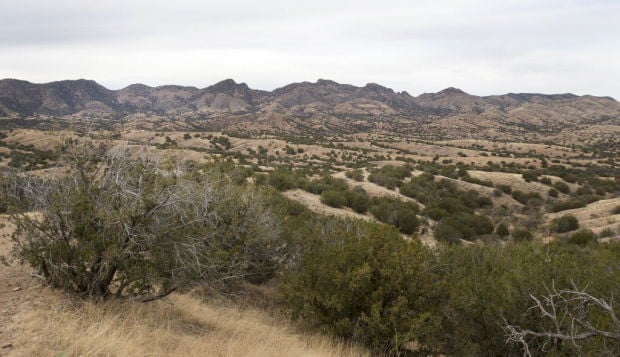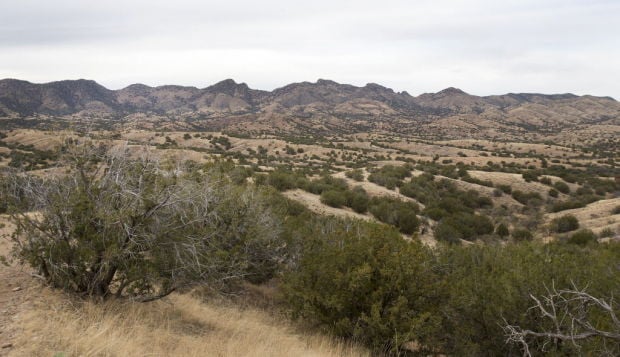Hudbay’s major new drilling campaign hasn’t changed the estimates of mineral deposits already known to be at the Rosemont Mine site.
“Based on the work we have done to date, we do not expect any significant changes from the tons and grade” estimated by the site’s previous owner, Augusta Resource Corp., Hudbay says in its annual information statement for 2015.
Hudbay spent four months last fall drilling and taking core mineral samples from 43 new holes on the site’s private land in the Santa Rita Mountains southeast of Tucson, in an $8 million exploratory campaign.
The company, which completed a takeover of Augusta in July 2014, said the additional drilling was simply due diligence on the part of the new owner.
Some outside observers, however, speculated Hudbay hoped to find more economically recoverable copper, which could extend the mine’s life or, mine critics contended, lead to a larger operation than is currently wending its way through the federal review process.
The company has said intends to mine 243 million pounds of copper annually from the Rosemont site, which includes federal and private land, once it begins operations.
However, Hudbay is holding off on formally signing off on Augusta’s past estimates of mineral reserves and resources as accurate until it completes a review of those estimates, Hudbay says in its new report. The reason: “A qualified person has not done sufficient work for us to classify Rosemont’s mineral reserves or resources as current mineral reserves or resources,” Hudbay said. It declined to elaborate when asked by the Star.
Outside analysts around the country have said the mine site has a “world-class” copper deposit. But seven years into the permitting process, the mine’s progress has been bogged down by environmentalist and community opposition, and by concerns of several federal agencies, including the Environmental Protection Agency and, at times, the Bureau of Land Management, over its impact.
The U.S. Forest Service has tentatively approved building the $1.2 billion project. It has delayed making a final decision until the Forest Service and the U.S. Fish and Wildlife Service finish a second round of biological reviews on the mine’s potential impact on endangered and threatened species. Completion of the reviews is several months away, at least.
In a July 2012 feasibility study, Augusta Resource estimated that the site has 279,481,000 tons of proven reserves and 325,798,000 tons of probable reserves, with an average grade of 0.44 percent copper. Augusta classified another 116,562,000 tons of ore as “inferred resources,” with an average grade of 0.4 percent copper.
Until Hudbay finishes its review of those estimates, it’s treating them as historical estimates, not as current mineral reserves or resources, Hudbay’s statment says. “Once our review is complete and the engineering is sufficiently advanced, we expect to complete a feasibility study for the Rosemont project, including a current estimate of the mineral reserves and resources.”
Hudbay and Augusta are both Canadian companies. Canadian government mining standards define a qualified person to review resources as “an engineer or geoscientist with a university degree, or equivalent accreditation, in an area of geoscience, or engineering, relating to mineral exploration or mining.” Such a person must also have five years’ experience in mineral exploration, mine development, mineral project assessment or any combination of those.
When the new drilling began last year, state geologist Lee Allison of the Arizona Geological Survey said he believed the company hoped the additional drilling would convert what has been thought to be “inferred” mineral resources to economically recoverable reserves. Allison said he based that belief on comments Rosemont officials made at a mining luncheon.
The company said that wasn’t its intent and that it didn’t expect to change its mining plans.
Hudbay also plans additional drilling in 2015, the company said earlier this year, “focusing on continuing to improve our understanding of the initial years of mining as well as plant site geotechnical work.”





